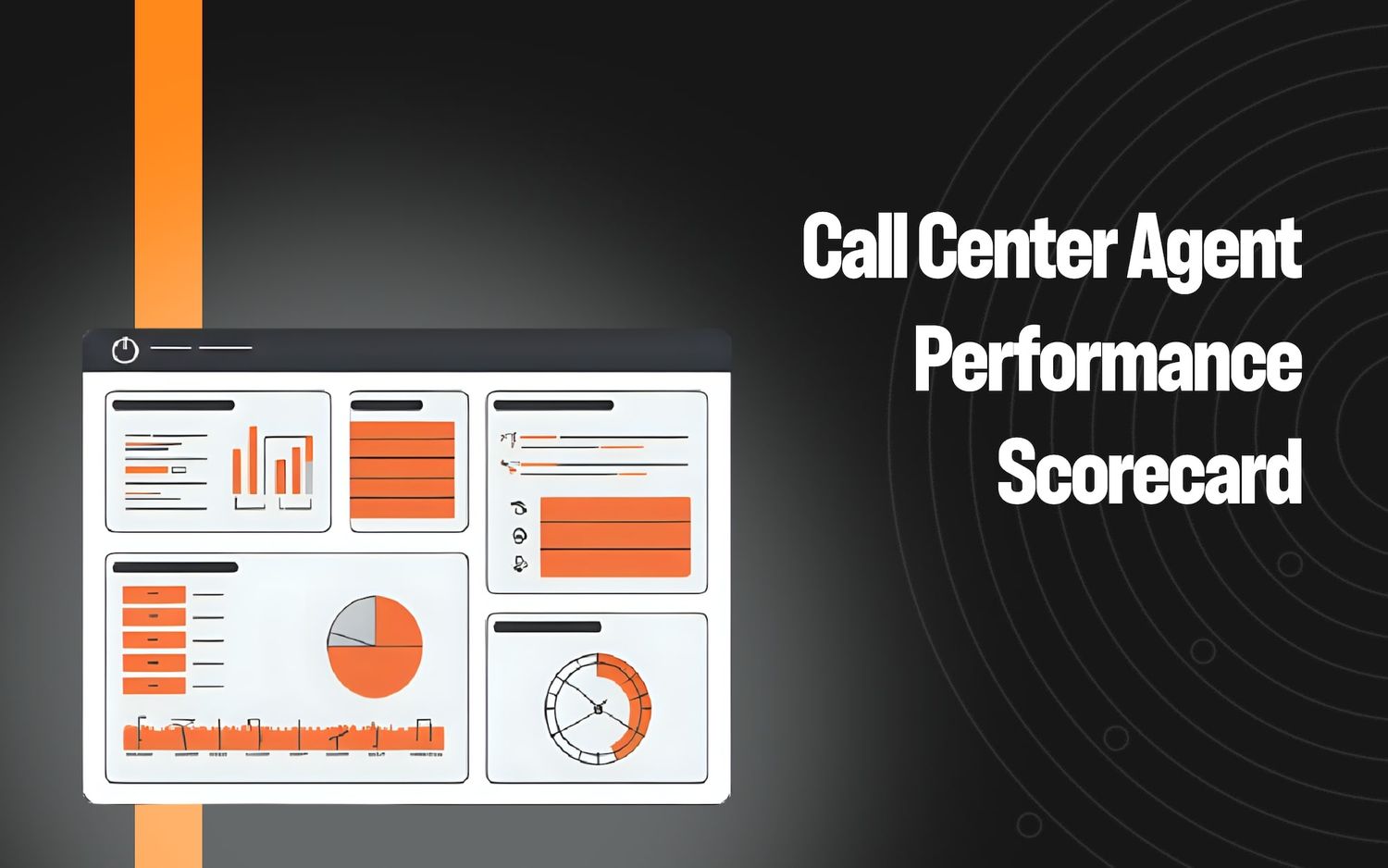10 Best Voice of Customer Software in 2025

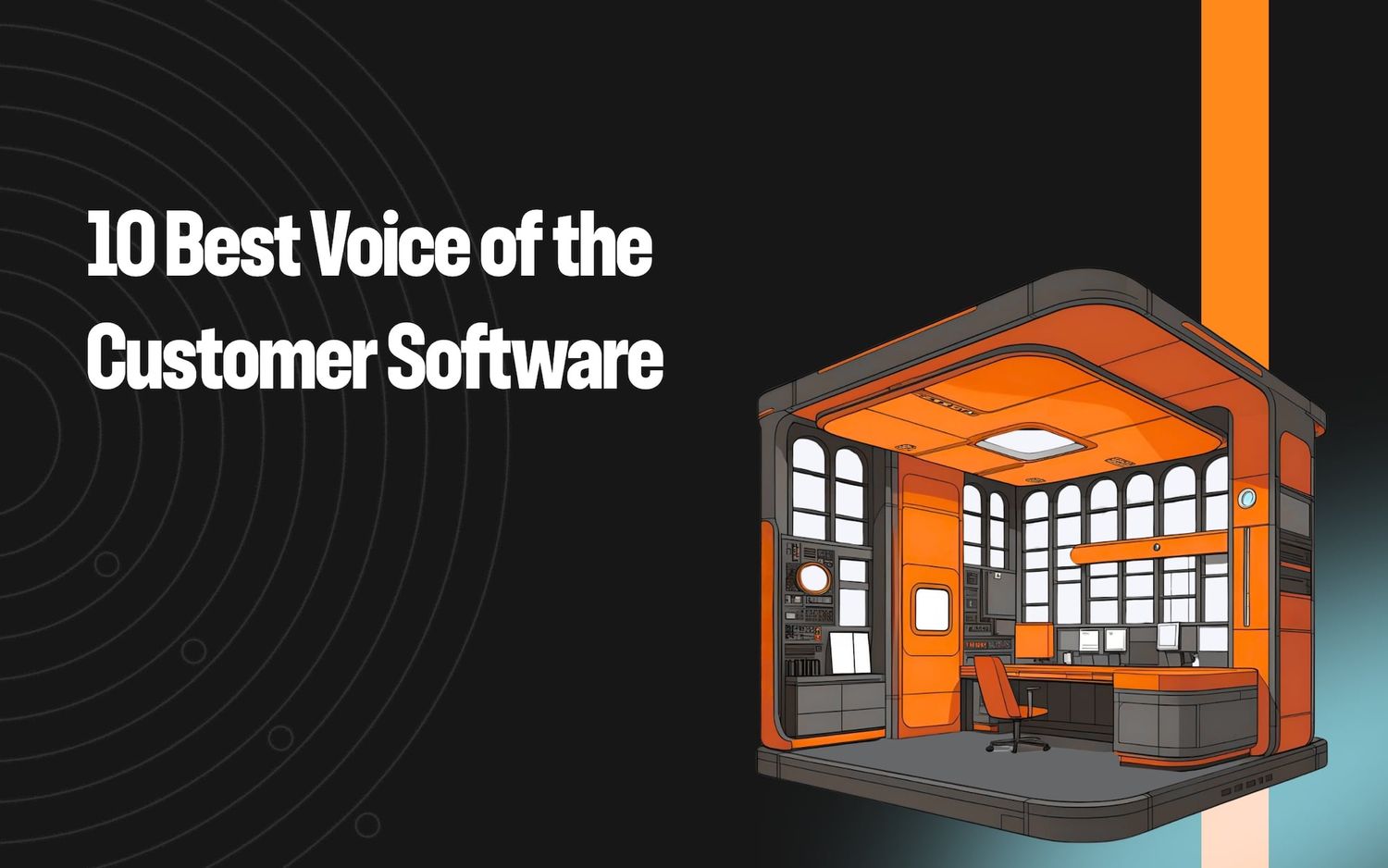
Voice of the Customer (VoC) software helps businesses collect and analyze customer feedback from conversations, surveys, and digital channels.
In this guide, we review 10 top platforms across three main categories:
Before diving in, here’s what to consider when evaluating VoC tools, and why not all feedback sources offer equal insight.
What to Look for in VoC Tools and Why It Matters
Businesses can gather VoC data in various ways, including through surveys, social media conversations, online reviews, and customer support interactions.
However, not all of these sources provide the same level of insights into the customer experience. For instance, the traditional way for businesses to collect feedback is through post-interaction customer surveys, but this approach has downsides, such as:
- Lower response rates from customers, leaving you with incomplete data.
- Customers who respond tend to represent the extremes, such as highly satisfied or highly dissatisfied, rather than those with neutral experiences.
- Bias in responses, as many who complete surveys don’t provide the full details of their experience, which skews feedback data.
Surveys remain viable for collecting targeted feedback by allowing you to ask specific questions. However, to uncover deeper insights, many organizations turn to advanced voice of customer VoC software that uses natural language understanding (NLU) to analyze sentiment across social media and support interactions.
These tools reveal patterns, sentiment, and emerging issues at scale, delivering a more complete and ongoing view of the customer experience. Because VoC solutions vary in focus and capabilities, understanding the differences is key to selecting the right one for your needs.
For instance, call center managers who want to track how customers feel about the quality of their service need to monitor conversations and detect customer issues and sentiment.
But marketing teams would instead use software with social listening capabilities to gauge brand sentiment across social media sites, blogs, and forums.
Top Customer Experience Management Platforms
1. Level AI
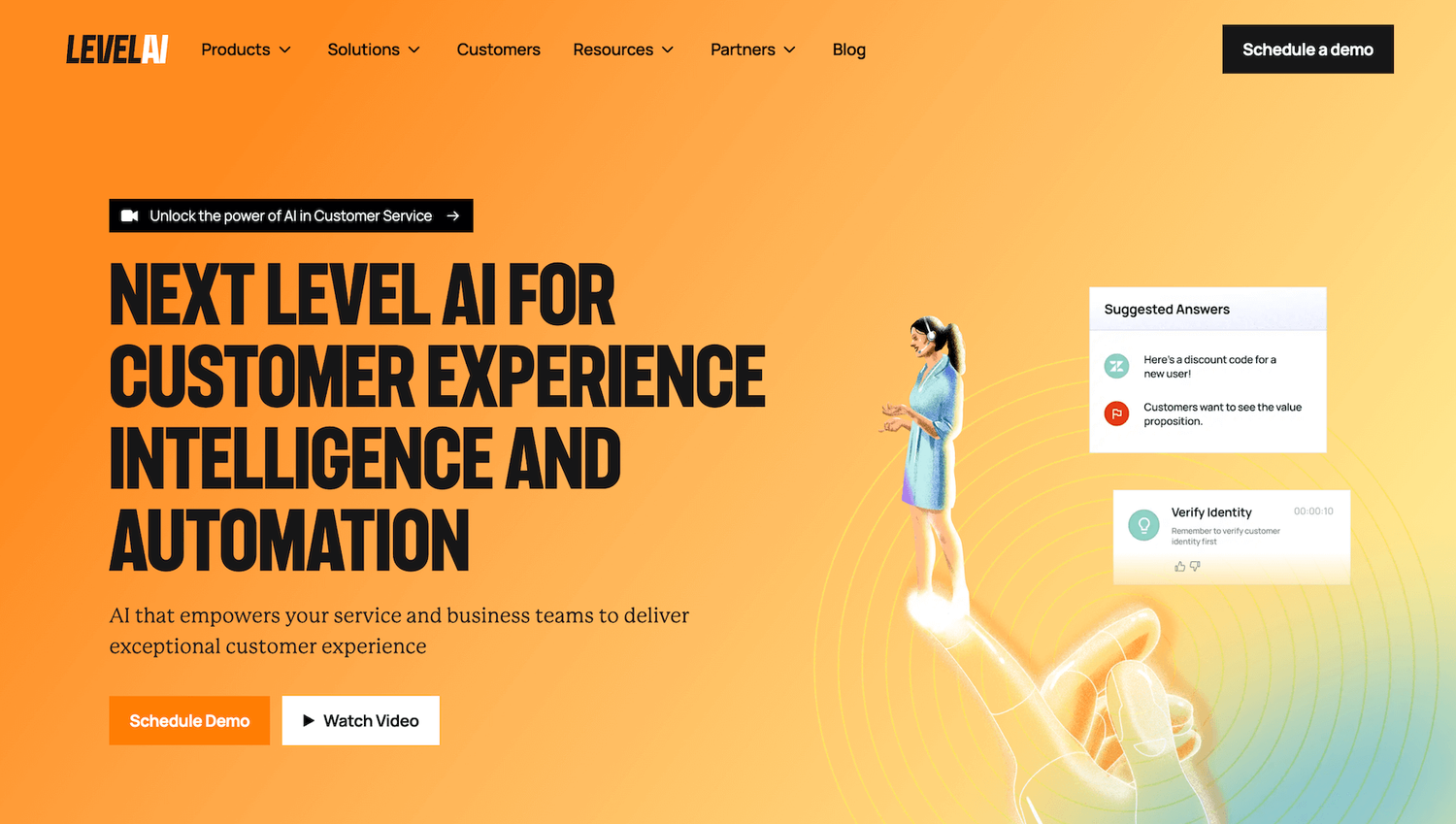
Level AI is a customer experience platform that allows QA and customer service teams to gather and analyze feedback from customer interactions. The platform uses generative AI and NLU to detect customer trends, feelings, and overall sentiment.
Level AI also offers Virtual Agent, which handles voice and chat conversations with human-like fluency. By understanding context in real time, AI Virtual Agent streamlines support and improves the overall customer experience by autonomously resolving a wider range of inquiries.
In addition to real-time support, the broader Level AI conversation analytics software gives organizations a clearer understanding of how customers perceive their brand. By analyzing the full scope of interactions, it eliminates the need to rely solely on post-interaction surveys to gather feedback and surface insights.
Specifically, Level AI:
- Automatically reviews 100% of customer conversations across all channels.
- Helps you understand how customers feel by detecting nuanced emotions, such as worry, admiration, or annoyance, rather than broad sentiment categories like positive or negative.
- Zeroes in on more subtle trends and friction points within your call center that may not be uncovered by standard customer satisfaction metrics.
- Visualizes VoC insights through intuitive, customizable dashboards by analyzing every customer interaction, without relying on surveys or manual data collection.
Accurately Detect Customer Intent
Some platforms claim to use AI for detecting call drivers while really just relying on keyword matching or basic NLP to flag occurrences of predefined keywords or phrases.
For example, a rule-based system that detects keywords like “stop service” or “cancel my subscription” would clearly recognize customer phrases containing such words, but might not identify other potential variations like "I don’t need this anymore" or "I’m switching to another provider,” unless such phrases were entered in the system as well.
Such systems require you to input hundreds of keyword variations manually, making them rigid and prone to missing intent that’s implied rather than explicitly stated.
In contrast, true intent detection uses semantic analysis to understand the meaning behind customer language, capturing more complex and indirect expressions of intent with higher accuracy.
Level AI uses AI speech analytics and semantic intelligence to identify call drivers by interpreting intent from the full context of the conversation rather than relying on surface-level keyword matches, even when customers use indirect language.
In particular, our software’s Scenario Engine interprets what customers and agents are saying with near-human understanding, categorizing intents as scenarios. For instance, if a customer describes issues like “I can’t access my account” or “the system keeps logging me out,” the engine might identify these as an “Account Access” scenario and tag it accordingly.
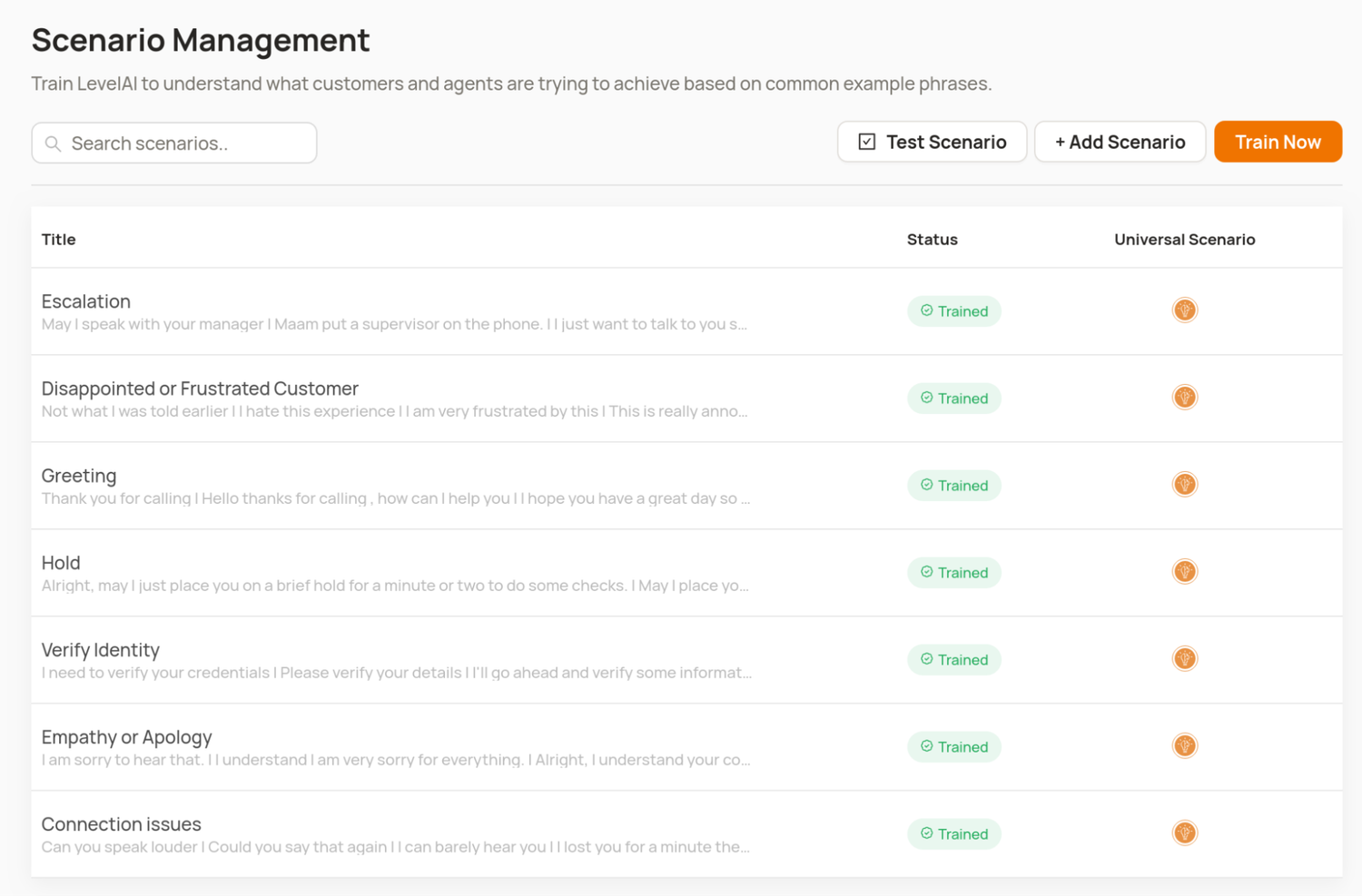
The platform allows you to create your own scenarios based on business needs or choose from a list of predefined scenarios already in the system.
After the software identifies scenarios, it applies conversation tags, such as “Technical Difficulties” or “Billing Disputes,” to mark where specific intents occurred during interactions.
Each conversation tag denotes a specific scenario. A single conversation may include multiple tags since customers and agents might discuss several topics during the interaction.
Conversation tags are also searchable and filterable, allowing you to find and group conversations in which a certain intent was expressed.
These conversation tags also serve as a useful reporting tool. Businesses can generate reports or build charts plotting specific intents against key metrics, like customer satisfaction scores or AHT.
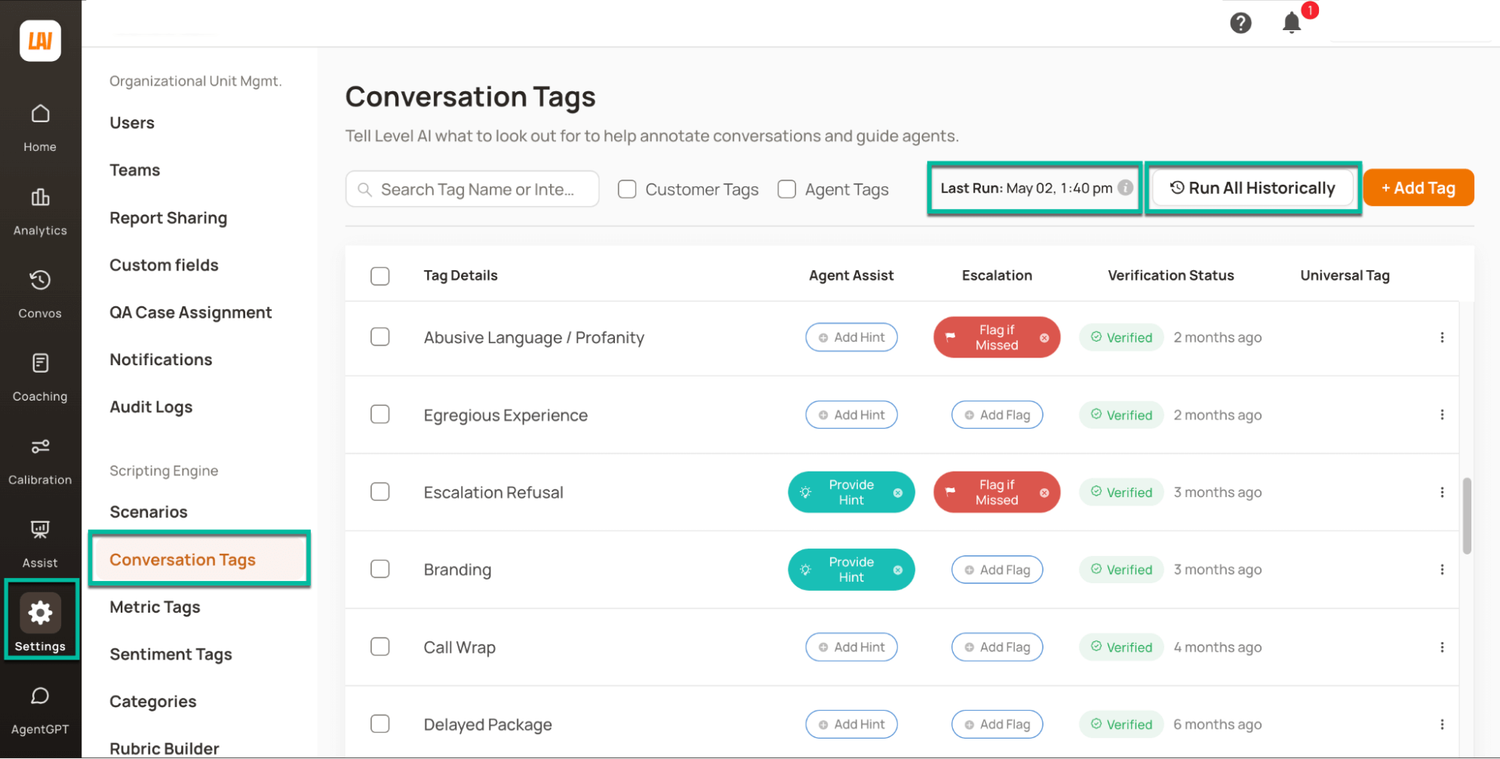
Analyze Customer Sentiment to Know Exactly How They Feel
Organizations that gather customer data through interactions typically rely on basic sentiment analysis, labeling interactions as “positive,” “negative,” or “neutral” with a scoring of -1, 0, or +1. This limited approach fails to capture the complexity of human emotions, leaving managers unaware of the true feelings driving customer interactions.
Even more advanced tools that use a six-tier scale, ranging from “very negative” to “very positive,” still fall short of detecting true emotions.
Rather than relying on binary classifications of sentiment, Level AI detects the broadest range of emotions of any VoC software on the market. These include:
- Anger
- Annoyance
- Disapproval
- Disappointment
- Worry
- Happiness
- Admiration
- Gratitude
Our platform also assigns a Sentiment Score to each conversation, providing a clear, aggregated measure of the customer’s emotional state.
This score, ranging from 0 (highly negative) to 10 (highly positive), more accurately reflects how customers feel on the call by using a weighted scoring system that prioritizes sentiments expressed toward the end of the conversation (especially after resolution). Such end-of-call sentiments often better indicate a customer’s lasting feelings about your brand, service, or product.

Level AI also uses sentiment tags to mark specific moments where an emotion was detected during a conversation. These tags track how emotions evolve during an interaction and are fully searchable and filterable, similar to conversation tags.
Identify Trends & Uncover Customer Issues with AI-Powered Analytics
Level AI’s Voice of the Customer Insights analyzes customer interactions to extract standard VoC metrics like CSAT, NPS, and CES. Because these insights are drawn directly from natural conversations, there’s no need to rely on post-interaction surveys, which often capture only a small, self-selected subset of responses.
This approach yields a more complete picture of customer sentiment by tapping into unfiltered, in-the-moment feedback that customers express organically during support interactions.
VoC Insights also automatically identifies emerging themes, recurring complaints, and patterns in customer language across channels, giving teams a continuous, real-time view of what customers are experiencing. This can pinpoint subtle pain points that might otherwise go unnoticed in manual reviews or survey-based feedback.
For example, our system could detect a recurring issue, such as customers frequently expressing frustration over unclear billing explanations during support calls. Highlighting this trend gives you the foresight to train agents who are struggling to improve customer satisfaction.
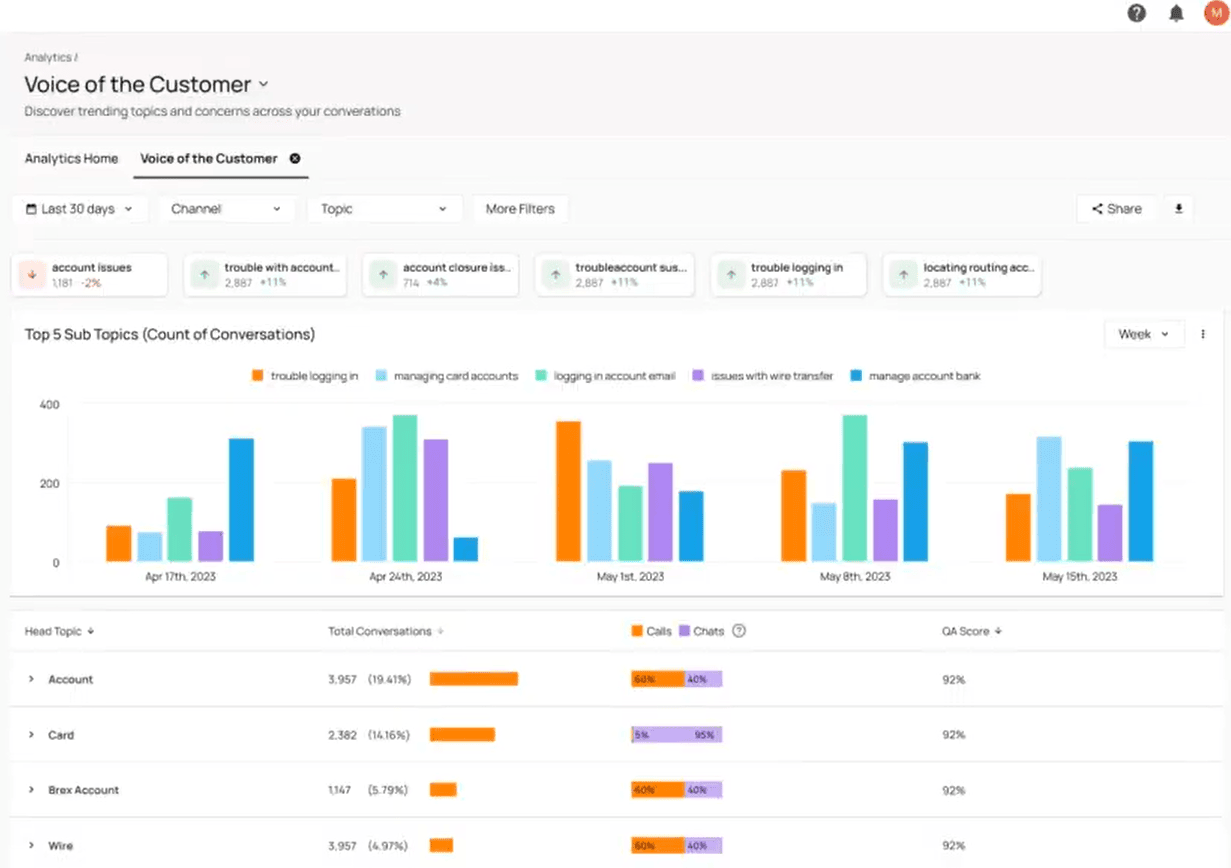
Level AI’s intuitive, zero-setup dashboards allow you to track emerging customer concerns, analyze trends across varying timeframes, and integrate your reporting with external systems for holistic insights.
Among the most valuable metrics available through these dashboards is our Inferred Customer Satisfaction (iCSAT) score: a single, reliable measure of satisfaction derived from actual interaction data, not post-interaction surveys. It reflects how customers truly feel and perceive their experience, beyond just the words they use.
The score, measured on a 1-to-5 scale (1 being very dissatisfied and 5 being very satisfied), is calculated from three key components:
- Sentiment Score: Assesses the customer’s emotional tone, capturing feelings like frustration, anger, or worry that shape their experience.
- Resolution Score: Evaluates whether the customer’s issue was fully or partially resolved to pinpoint areas where improvements could be made.
- Customer Effort Score: Measures the effort required from the customer, such as repeating the same information or struggling with instructions from agents, which can cause satisfaction to decline.
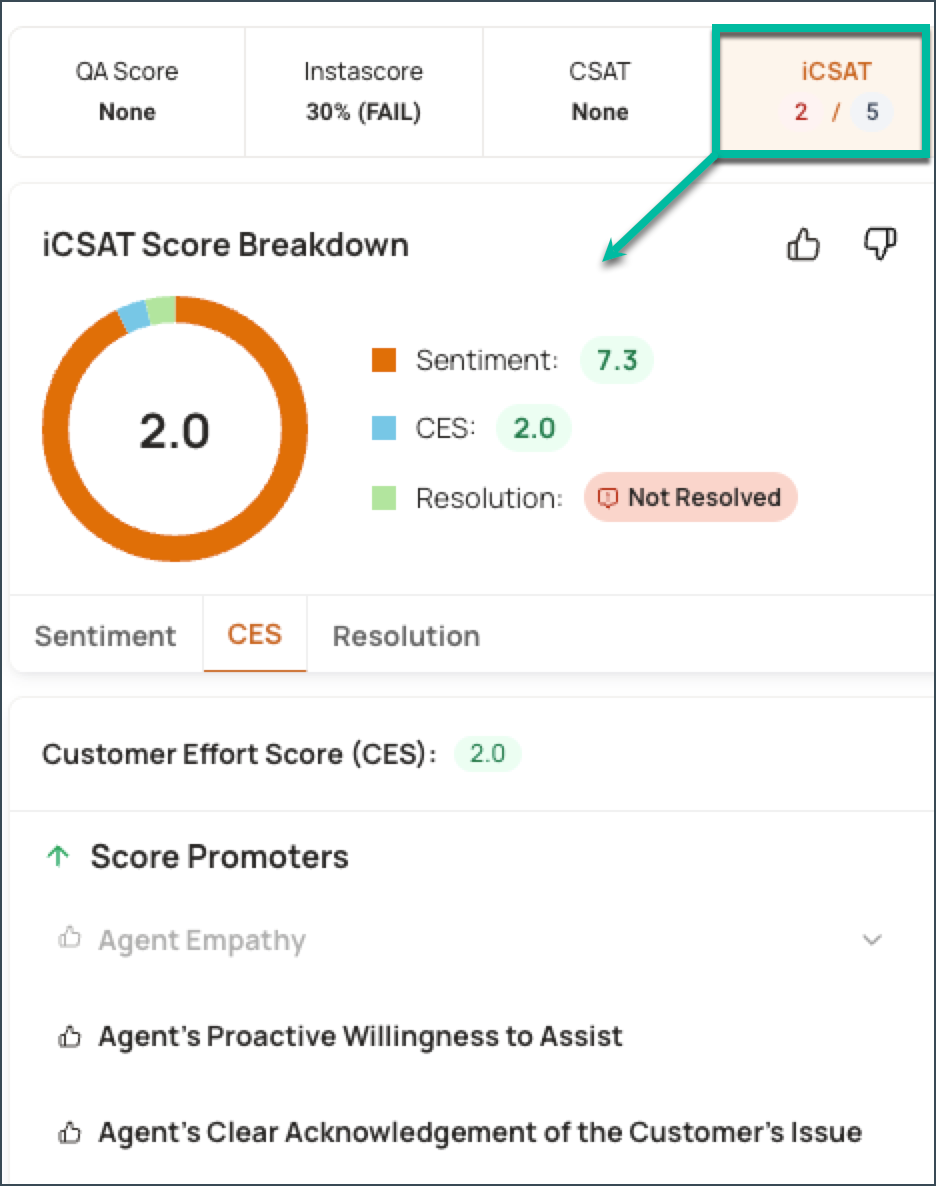
iCSAT shows you unmet customer needs, such as recurring complaints about rude agents, and lets you take proactive steps to address them. It also helps you to:
- Identify flaws in existing processes that cause frustration for customers (e.g., too many steps for refund requests).
- Find agents who need coaching and what they need to work on most before it hurts the customer experience, resulting in lower CSAT scores.
- Sync ICSAT data with other organizational trends, such as churn, retention rates, revenue, etc.
Visibility at Scale: Scoring, Monitoring, and Coaching
Call center tracking system software often requires you to randomly sample calls to assess agent performance and determine whether a specific interaction requires intervention.
Besides choosing some call to listen in on, you might also rely on basic metrics like duration to hint at whether a particular call is going well or not, but duration alone doesn’t give you much information to go on.
Level AI’s InstaScore (expressed as a percentage) auto-scores agents against rubrics designed around your organization’s quality standards, evaluating key behaviors like how the agent greeted the customer, demonstrated product knowledge, and delivered a resolution, so you no longer have to guess which interactions need attention.
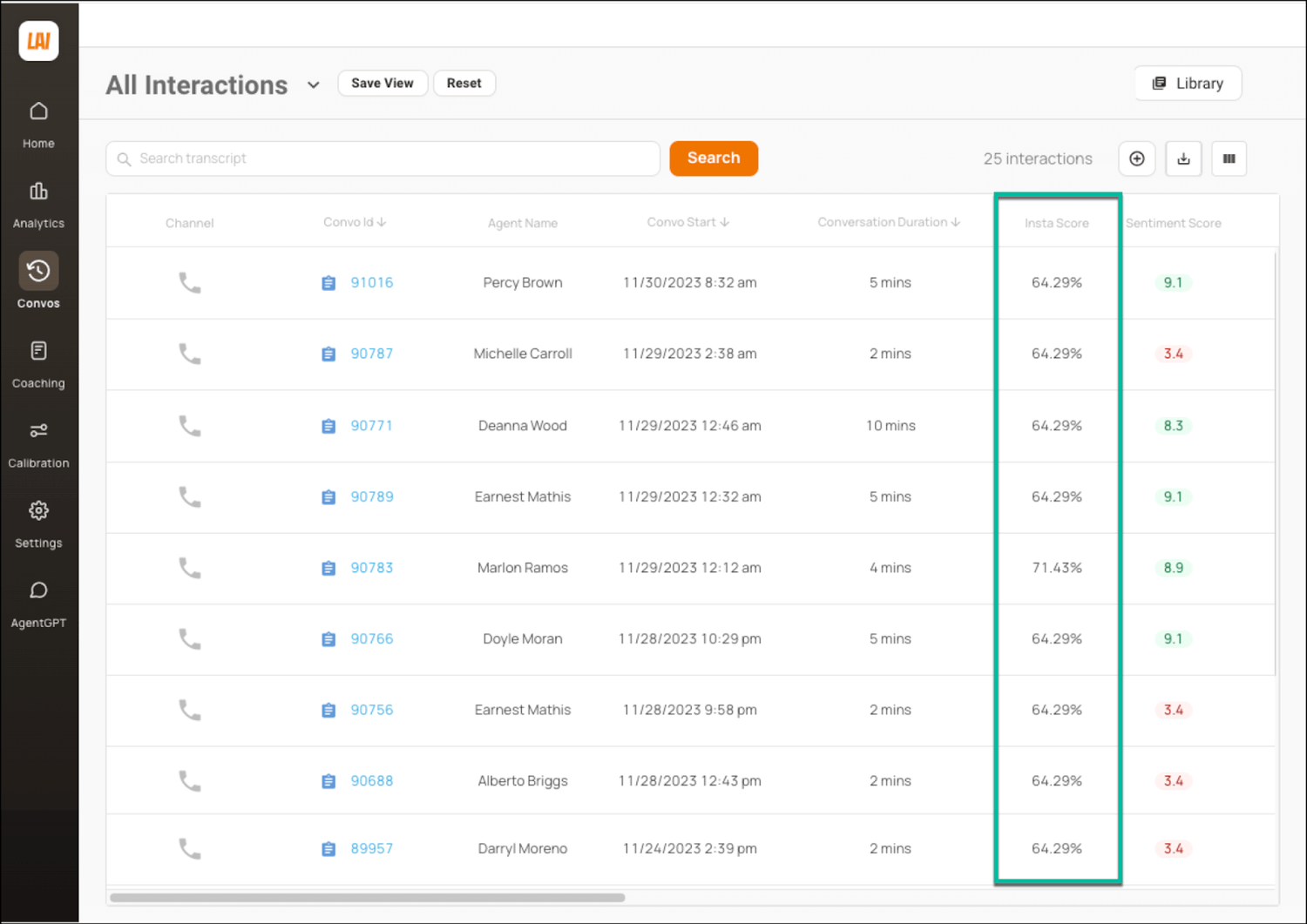
InstaScore provides a clear post-call view of agent performance, but for teams that want to take action while the interaction is still happening, Level AI offers Real-Time Manager Assist.
This module allows you to monitor live calls and keep tabs on agent performance across all ongoing conversations, showing you opportunities to step in proactively when support is needed or when calls show early signs of going off track based on live InstaScore or sentiment:
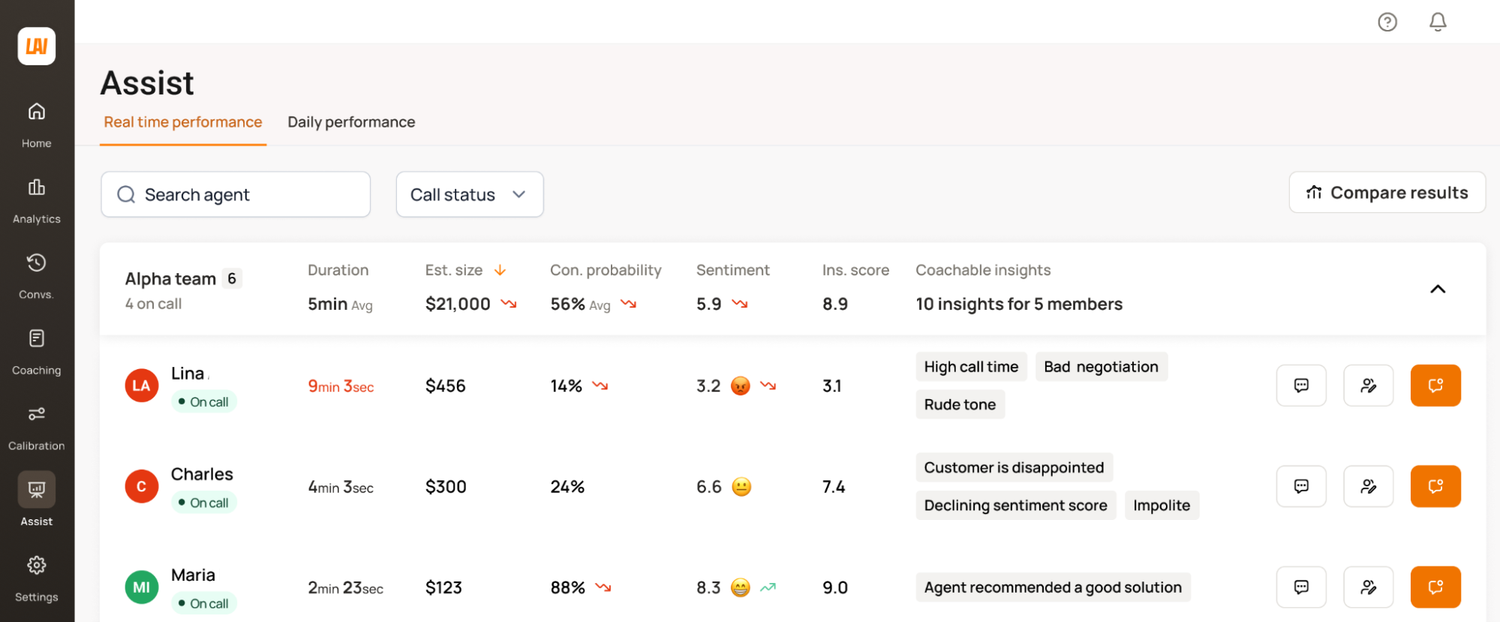
You can click on any interaction or KPI in the dashboard to view additional details about it.
It also shows live call metrics like deal size, conversion probability, and call duration. These, along with the call center analytics dashboard's Coachable Insights, allow you to identify coaching opportunities for agents.
In cases where intervention is necessary, Real-Time Agent Assist supports call whispering and call barging.
You can also set up alerts to get notified when specific events occur — like a low live Sentiment Score. Alerts can be sent via Slack or Microsoft Teams.
See our article on how to monitor call center performance.
Additionally, QA teams can use Level AI’s InstaReview to streamline sampling of calls warranting your attention, whether for positive or negative reasons.
It automatically flags them by analyzing patterns in agent behavior and customer response, such as:
- Frequent requests for supervisor assistance during calls.
- Multiple alerts triggered by predefined flags, like policy violations or escalations.
- Above-average call durations.
- Indicators of poor customer satisfaction, such as negative sentiment.

This targeted approach aligns with call center quality assurance best practices and helps you better decide which calls to sample, whether for coaching opportunities or to recognize good agent performance.
From the dashboard, you can initiate coaching sessions, review full call transcripts, listen to audio recordings, and refer back to tagged key moments during the calls within a single interface.
Ready to uncover hidden VoC insights about the customer experience? Book a free demo to learn how our VoC tools can improve satisfaction.
2. InMoment
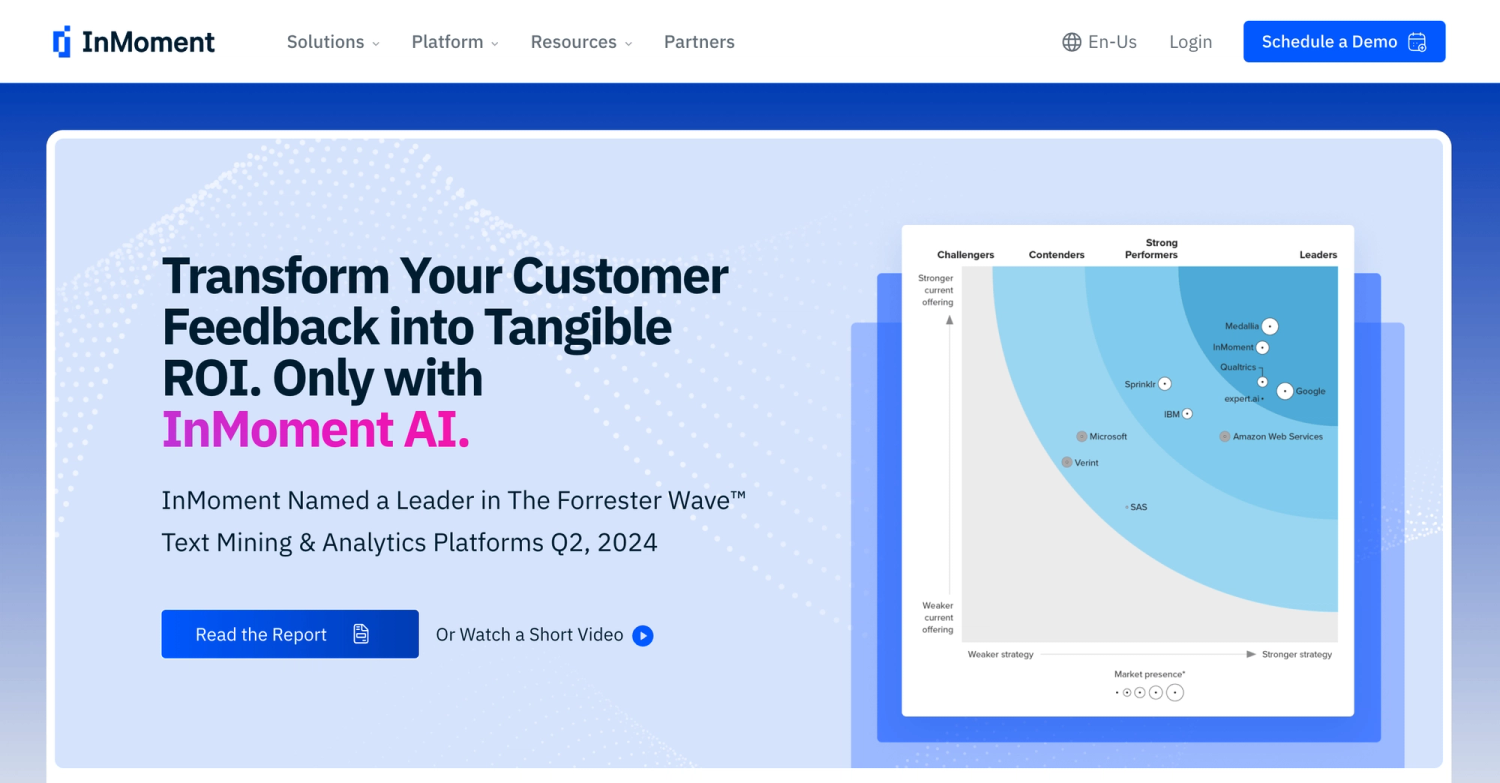
InMoment is a customer experience intelligence platform that helps businesses extract insights from customer and employee interactions.
The Experience Improvement platform delivers actionable insights through user-friendly dashboards and is particularly useful for teams looking to integrate various feedback channels.
InMoment’s key VoC features include:
- AI survey builder tools
- Active listening bot that provides advanced conversational data and insights
- Text analytics and sentiment analysis
- Real-time alerts and case management to address customer issues
- Omnichannel feedback collection
InMoment offers customized pricing tailored to your specific organizational needs, budget, and number of team members.
3. Medallia

Medallia is a CX platform that captures customer feedback across multiple touchpoints and turns it into actionable VoC insights.
The platform's real-time analytics and machine learning capabilities help organizations improve customer satisfaction and loyalty at scale. It includes various collection methods, including via SMS, email, or through traditional surveys.
Medallia's key features include:
- Omnichannel feedback capture for multiple channels.
- Real-time trend analysis with AI.
- Dynamic cohort tracking for customer segmentation.
- Automated action workflows for quick customer issue response.
- Predictive analytics dashboards.
Medallia offers custom pricing only. You can contact their sales team for additional information on pricing plans.
4. Qualtrics
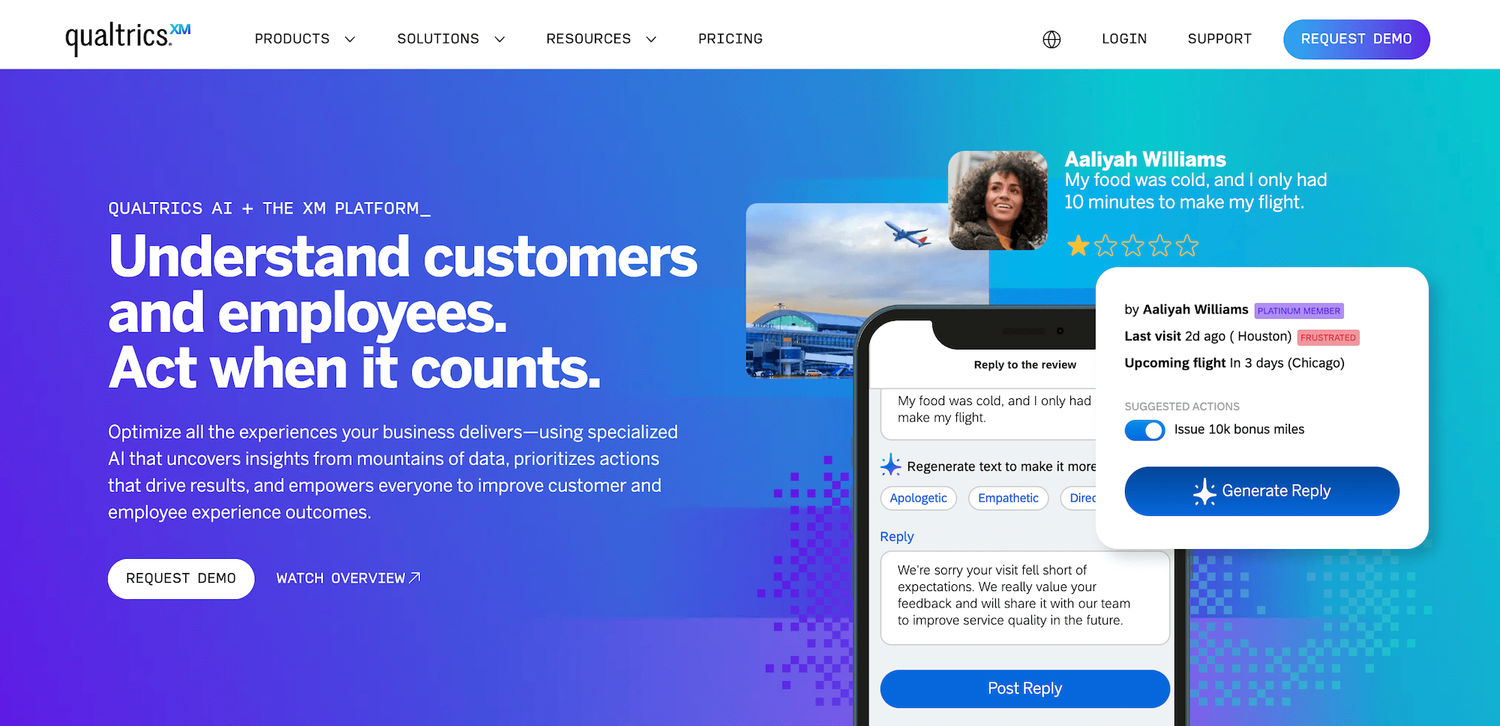
Qualtrics is a customer experience management platform built to collect and analyze VoC data for enterprise businesses, and helps organizations uncover insights from every interaction and pinpoint areas for improvement.
Key Qualtrics features:
- Customizable survey tools with advanced logic and distribution options.
- XM Discover for analyzing unstructured data like chat, calls, and reviews.
- Predictive intelligence and sentiment analysis.
- Automated ticketing and follow-up actions for customer complaints and issues.
- Integration with CRM and customer support tools for a holistic view of the customer journey.
Because Qualtrics’ XM Discover is designed for enterprise teams, pricing is not publicly available, and they offer custom plans only.
Top Social Listening Platforms
1. Brandwatch
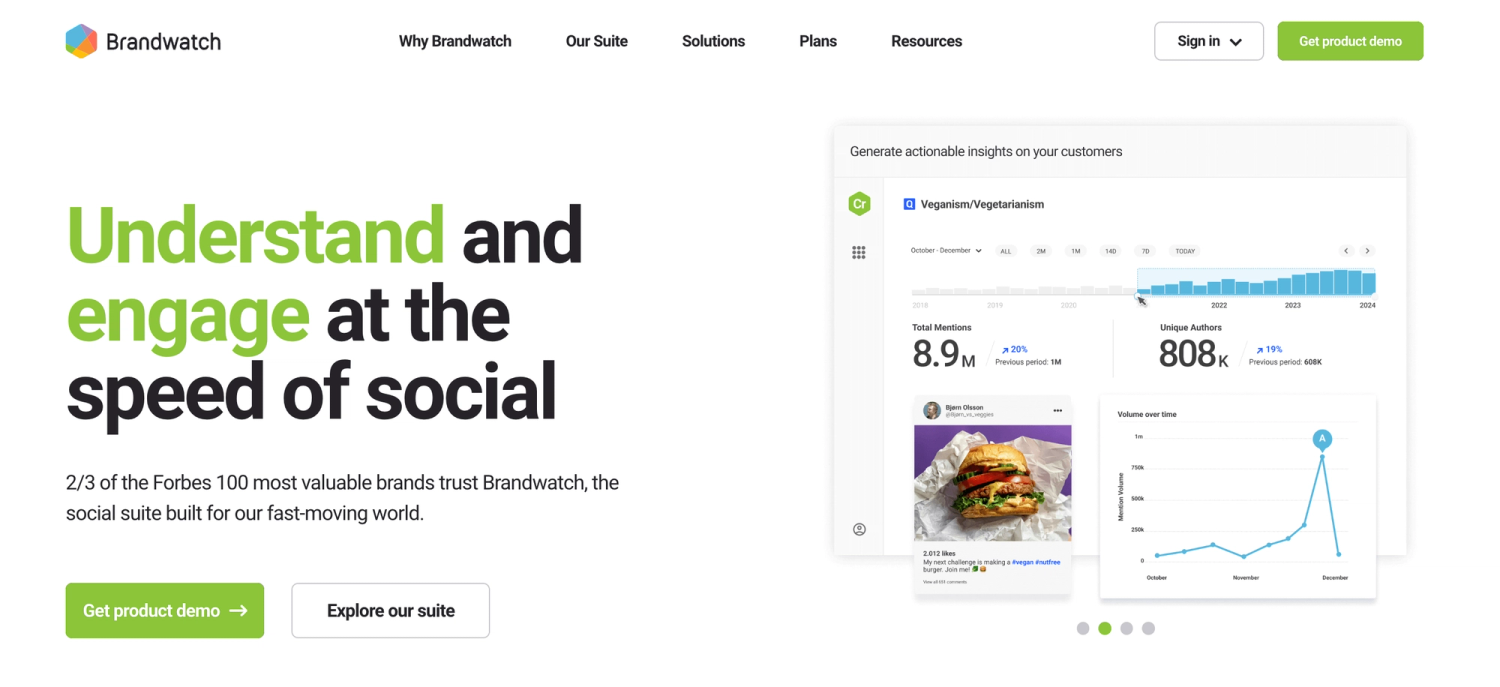
Brandwatch is a consumer intelligence and social listening platform that allows businesses to track and analyze public conversations across various digital channels. It offers deep VoC insights by turning unstructured online chatter into actionable data. Brandwatch also offers social media management and influencer marketing capabilities.
Key VoC Brandwatch features include:
- Extensive data coverage: Access to over 1.4 trillion historical posts and 496 million new ones daily from blogs, forums, reviews, and all major social platforms.
- Iris AI assistant: Uses generative AI to locate emerging customer discussions, analyze themes, and instantly produce plain-language summaries and insights.
- Flexible dashboards and reporting capabilities: Visualize trends and sentiment through 50+ chart types, with exportable reports for easy stakeholder sharing.
Pricing for Brandwatch is not publicly listed. They only offer custom quotes tailored to your specific needs.
2. Meltwater
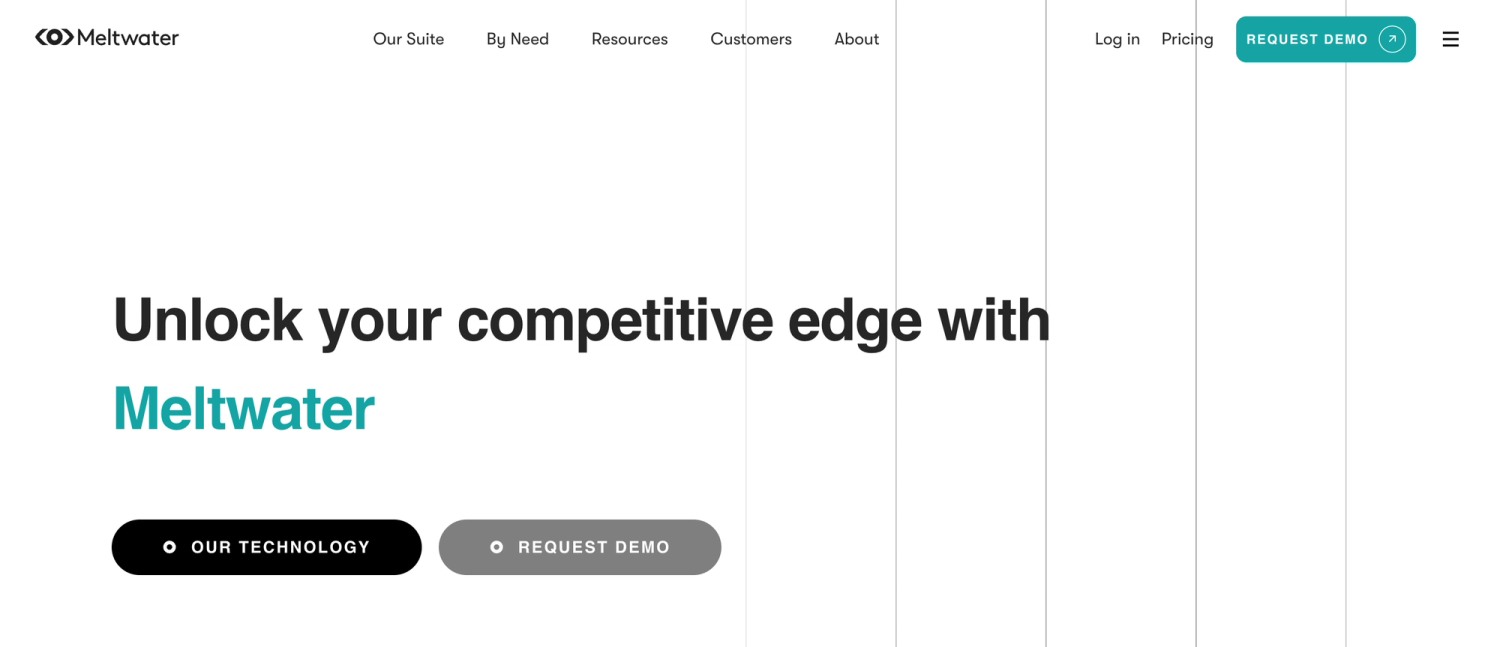
Meltwater is a media intelligence suite with various social listening and analytics tools to gather VoC data. It helps organizations understand customer sentiment, competitive positioning, and brand reputation in real time across digital channels.
Meltwater provides marketing teams with various features, including:
- Real-time social media monitoring to track mentions from 100M+ online sources (social, blogs, etc.)
- Audience insight tools to identify key customer demographics, locations, and influencers based on conversation data.
- Sentiment and trend analysis capabilities to better understand customer feedback and spot emerging patterns.
Meltwater's pricing is custom only, allowing organizations to build custom packages specifically that match their individual needs.
3. Talkwalker
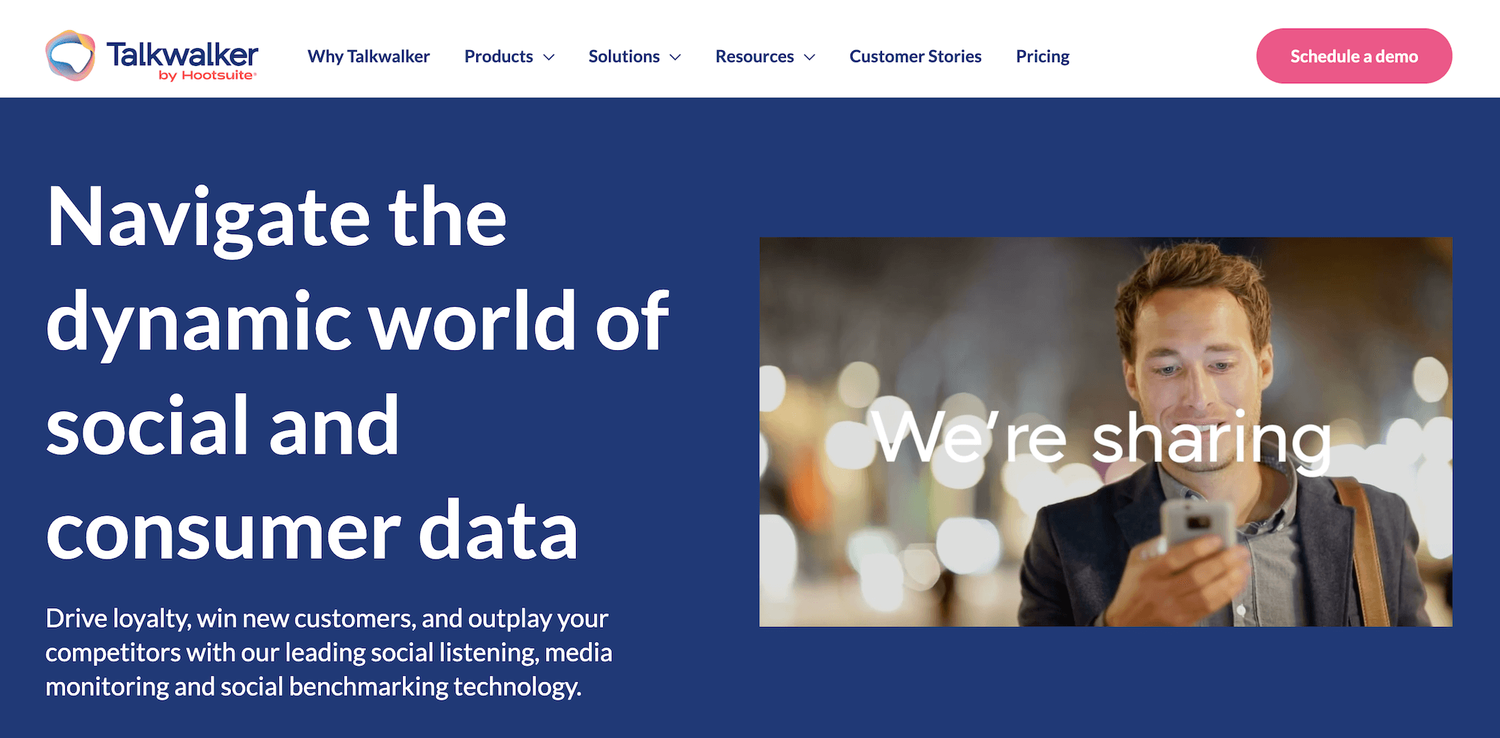
Talkwalker is a VoC and social analytics platform that helps organizations gauge the full scope of customer sentiment, trends, and brand perception online. The platform combines real-time social listening with AI-powered analytics for deeper customer insights.
Key Talkwalker features include:
- 360° feedback aggregation: Collects data from over 300 sources, including social, reviews, support tickets, surveys, and blogs.
- Visual listening technology: Detects brand logos and scenes in images and videos, expanding insight beyond text.
- Trend prediction and benchmarking: AI detects rising trends and compares your brand performance with competitors in real time.
Pricing is not available online, but plans are tiered. Contact sales for more information and a demo.
Top Survey Collection Tools
1. SurveyMonkey
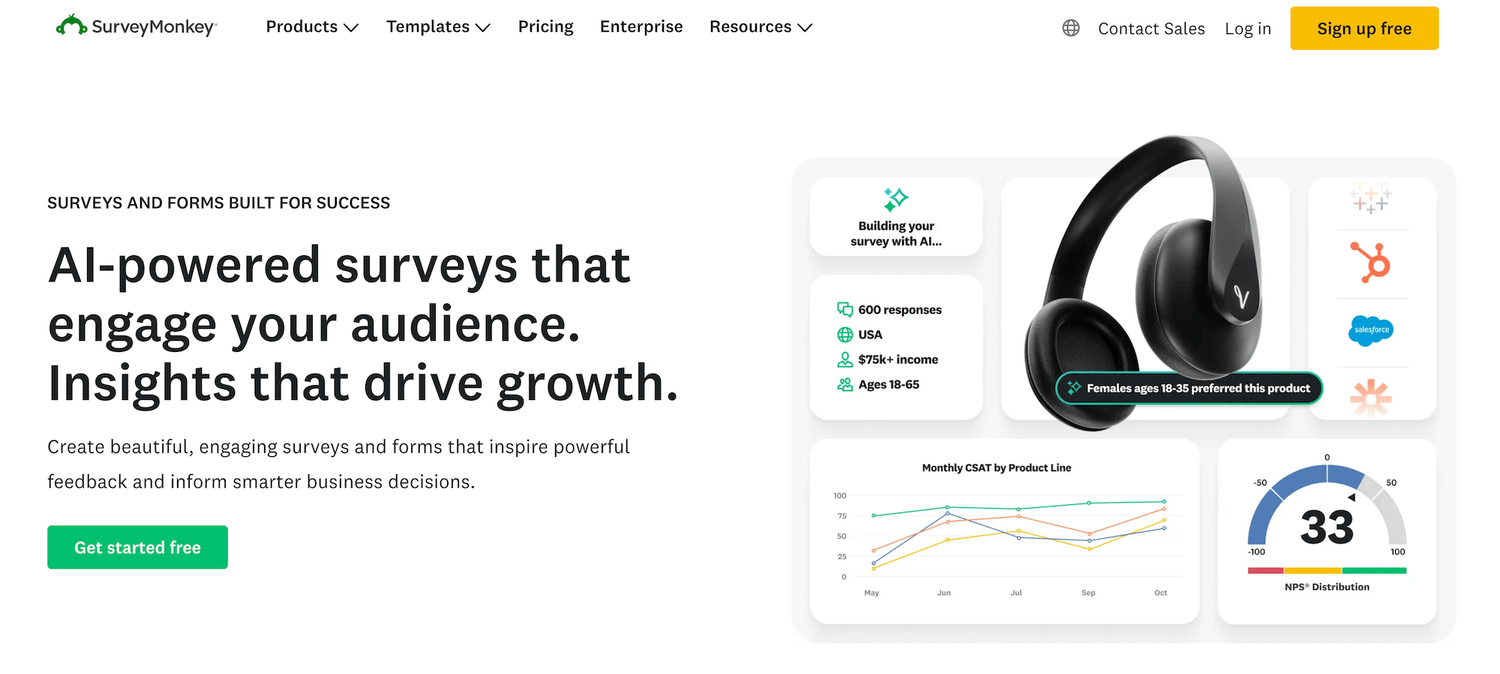
SurveyMonkey is an online survey platform that simplifies the process of creating and distributing surveys to gather VoC data. Users can build surveys from over 400+ templates or rely on SurveyMonkey's global panel of 335+ million respondents for additional insights.
Top SurveyMonkey features include:
- Drag-and-drop interface with pre-made templates and expert-written survey questions.
- Advanced logic, question randomization, and A/B testing to ensure relevant and accurate responses.
- Seamless integrations with tools like Salesforce, HubSpot, and Mailchimp to streamline data analysis.
- Real-time response tracking, customizable reports, and text analysis to uncover additional insights.
SurveyMonkey offers a free plan with unlimited surveys. Paid plans start at $25 per month for individuals, with enterprise pricing available upon request.
2. Alchemer
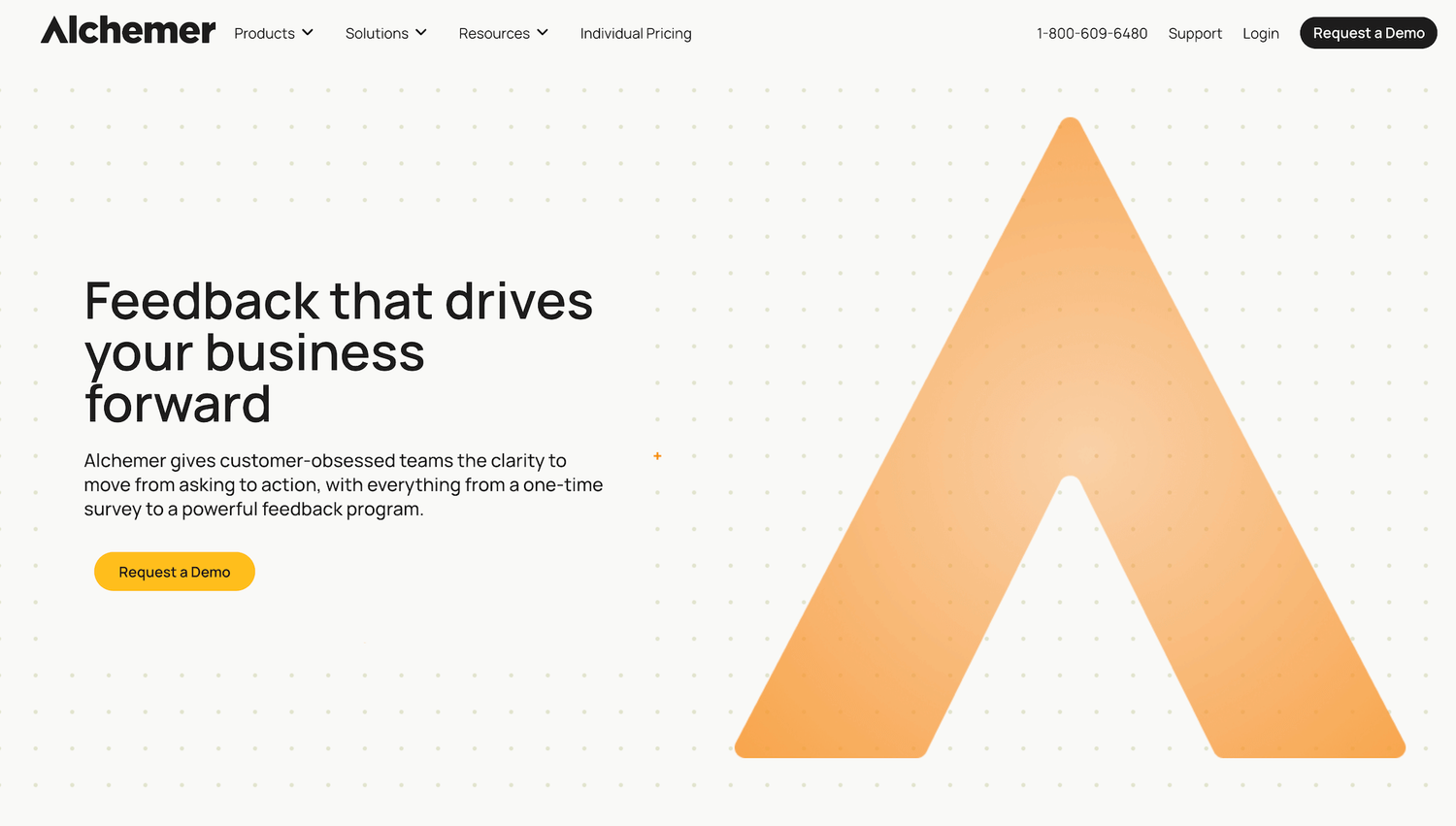
Alchemer (formerly SurveyGizmo) is a survey platform with experience management functionality to collect real-time customer feedback.
The tool offers a customizable survey design builder with over 43 question types, 20+ logic and branching options, and flexible reporting options to gather the insights you need.
Alchemer’s key features include:
- Alchemer Digital for Precise Targeting: Use digital events and customer data to deliver in-app and web-based surveys at the perfect time to boost customer response rates by up to 10x compared to traditional methods like email.
- Alchemer Pulse with AI-Driven Insights: Rely on purpose-built AI to analyze unstructured feedback from surveys, reviews, social media, and support tickets for more actionable insights.
- Customizable Dashboards: Offers role-based, interactive dashboards with 40+ question types and real-time analytics for functionality to visualize customer journeys, identify trends, and share insights across teams.
- Seamless Integrations: Connects with over 400 platforms, including Salesforce, Slack, and Tableau, to integrate feedback management into existing workflows.
Alchemer’s free plan supports unlimited questions, 100 responses per survey, and three active surveys. Paid plans start at $55 per month per user for the Collaborator plan, with enterprise pricing available for custom needs.
3. SurveySparrow
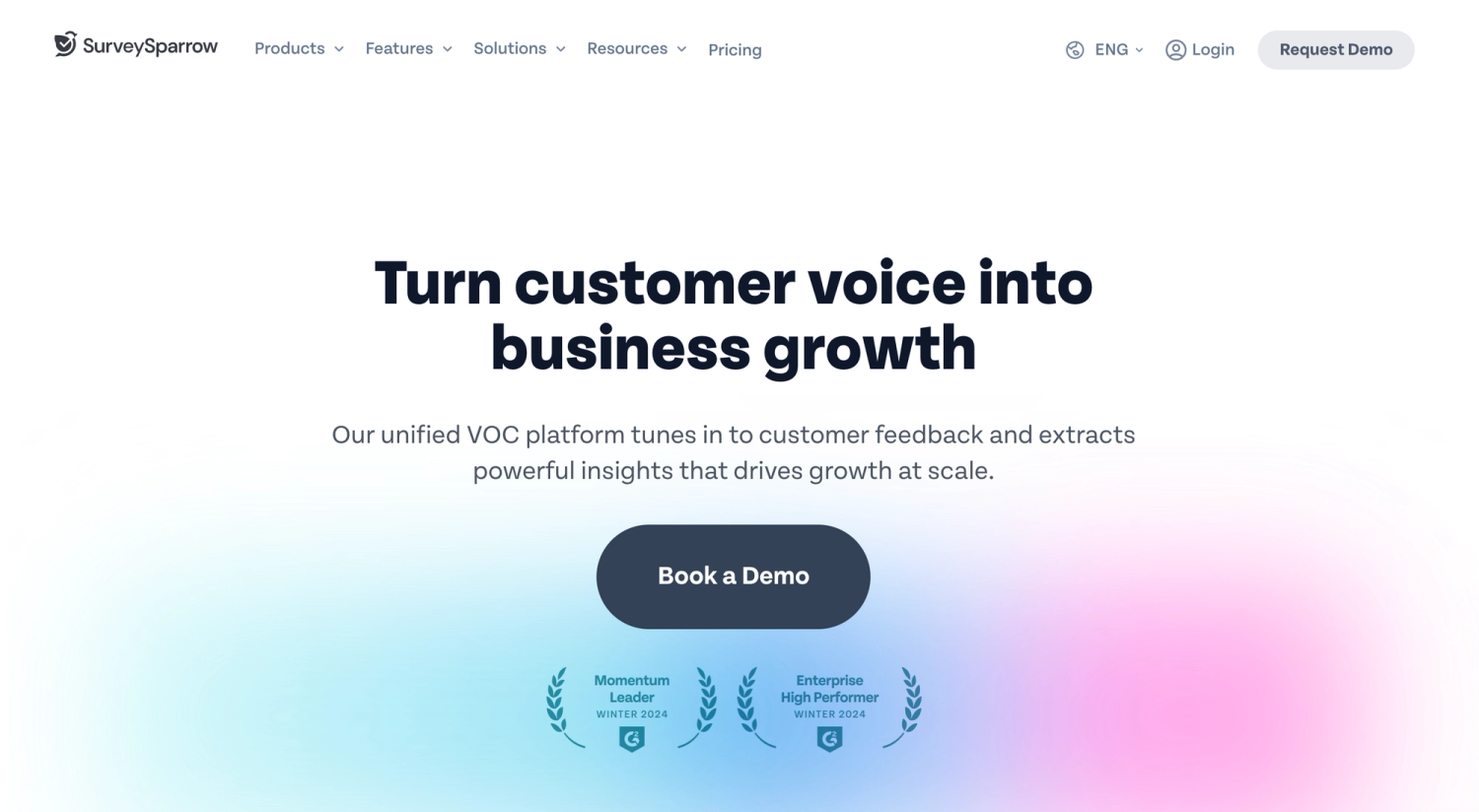
SurveySparrow is a VoC survey platform that provides functionality for a free survey builder, CX management features, brand reputation management, and a conversational, chat-like survey experience.
The platform helps businesses capture real-time customer feedback through interactive surveys for market research. It offers 600 survey templates, a random question generator, and 360-degree assessments.
Key SurveySparrow features include:
- Engaging, chat-style surveys with dynamic question flows to reduce respondent fatigue.
- Omnichannel feedback collection that allows you to distribute surveys via email, SMS, WhatsApp, web embeds, QR codes, and more.
- CogniVue AI-powered analytics to uncover deep insights and track customer sentiment trends over time.
- Over 1,500 integrations with popular tools, including HubSpot, Zendesk, and Slack.
SurveySparrow offers a 14-day free trial with access to premium features. Paid plans start at $19 per month for the Basic plan, with enterprise pricing available for custom requirements.
Go Beyond Surveys to Hear What Customers Really Mean
Level AI captures customer-centric insights from real conversations, giving you full visibility into customer sentiment, intent, and experience across every channel. Spot trends, uncover friction points, and act faster with data that’s richer and more representative.
Start turning every interaction into a strategic advantage by booking a demo today.
Keep reading
View all

